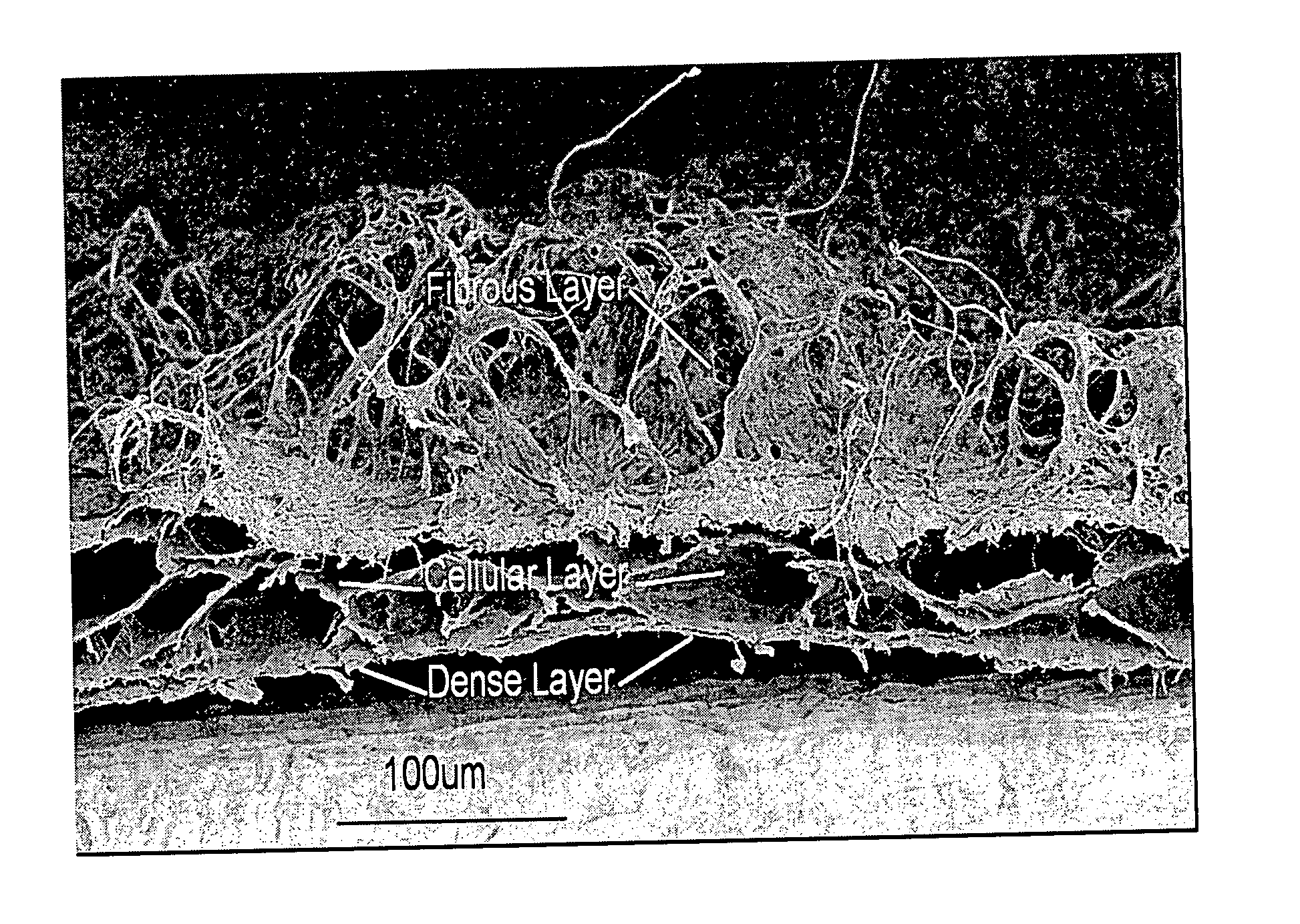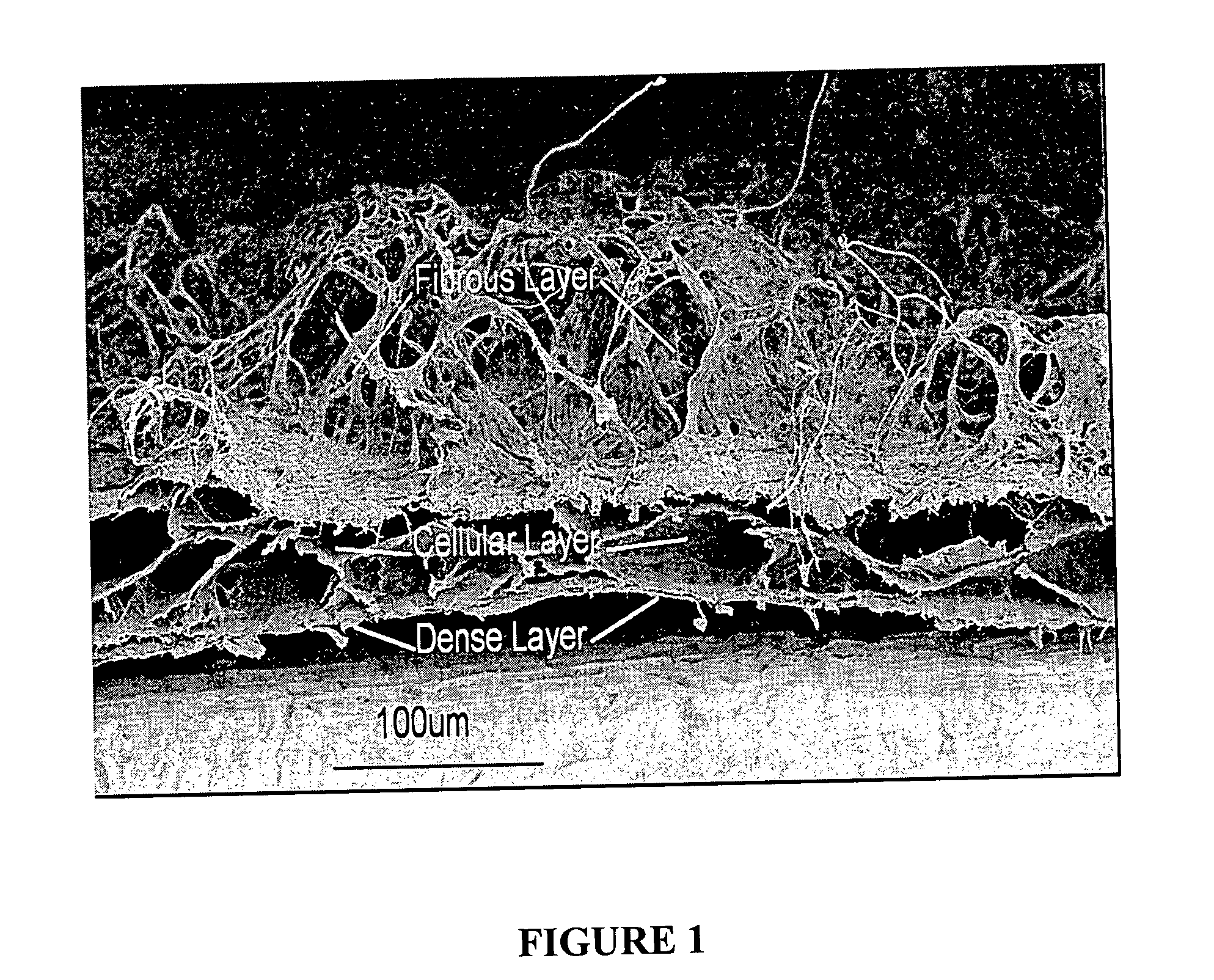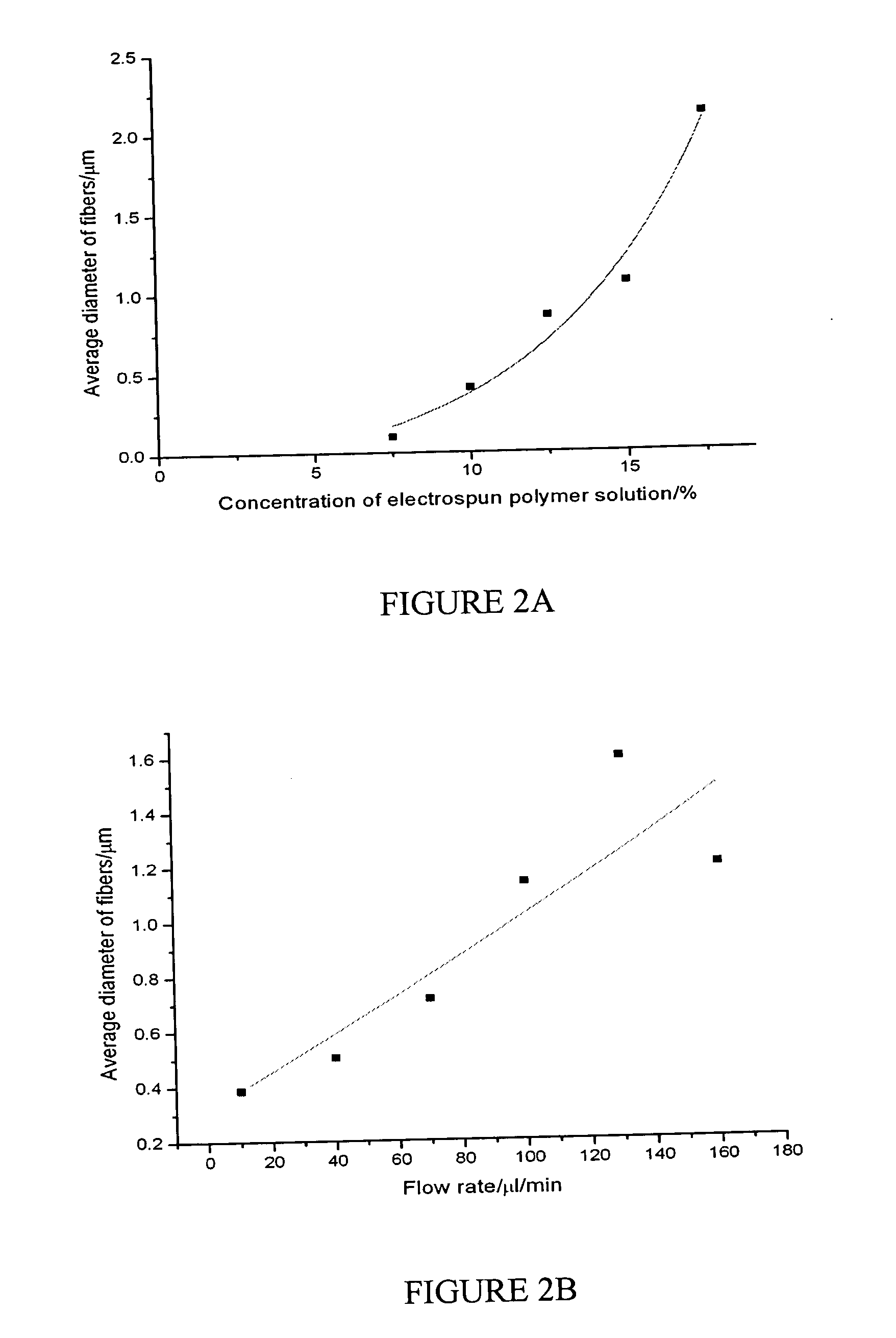Three dimensional-BIO-mimicking active scaffolds
- Summary
- Abstract
- Description
- Claims
- Application Information
AI Technical Summary
Benefits of technology
Problems solved by technology
Method used
Image
Examples
examples
Electrospun Materials Using Cellulose Acetate
Materials & Methods
Processing of Cellulose Acetate
[0033] CA (29,000 g / mol) and 40% substitution (acetyl groups) purchased from Fluka (Fluka Chemie GmbH CH-9471 Buchs) and acetone with compositions ranging from 7.5 to 17.5% w / v were made simply by mixing CA powder and acetone at room temperature. Magnetic stirring was applied to the solutions due to precipitation of CA.
Electrospinning Conditions
[0034] The apparatus of electrospinning setup consists of high voltage power supply which could provide up to several tens of Kilovolts, say 40 kV, with two electrodes, metering pump, a glass syringe with a small diameter needle (millimeter scale) and collector usually a metal screen. One of the two electrodes was attached to the needle of the syringe while the other was attached to the collector. In the initial experiments, the flow rate was varied from 10 to 160 μl / min and the strength of electric field was varied from 7 to 19 kV so as to ...
PUM
| Property | Measurement | Unit |
|---|---|---|
| Length | aaaaa | aaaaa |
| Length | aaaaa | aaaaa |
| Diameter | aaaaa | aaaaa |
Abstract
Description
Claims
Application Information
 Login to View More
Login to View More - R&D
- Intellectual Property
- Life Sciences
- Materials
- Tech Scout
- Unparalleled Data Quality
- Higher Quality Content
- 60% Fewer Hallucinations
Browse by: Latest US Patents, China's latest patents, Technical Efficacy Thesaurus, Application Domain, Technology Topic, Popular Technical Reports.
© 2025 PatSnap. All rights reserved.Legal|Privacy policy|Modern Slavery Act Transparency Statement|Sitemap|About US| Contact US: help@patsnap.com



